| Pages:
1
..
9
10
11 |
XeonTheMGPony
International Hazard
    
Posts: 1640
Registered: 5-1-2016
Member Is Offline
Mood: No Mood
|
|
Either type of of resister dampens the effect of the plasma shock you're trying to create.
The point of the fine wire is it creates a metal ion rich plasma that can generate tremendous pressure and heat, this is where you get the high order
shock from.
Carbon just doesn't do it quite the same.
|
|
|
nux vomica
Hazard to Others
  
Posts: 267
Registered: 18-7-2013
Member Is Offline
Mood: No Mood
|
|
Gave it another shot today worked ok to me  i think the first shot moved and
tilted away from the 2mm plate if you look at the plate the caseing fragments only marked one side as if the detonator had moved . i think the first shot moved and
tilted away from the 2mm plate if you look at the plate the caseing fragments only marked one side as if the detonator had moved .
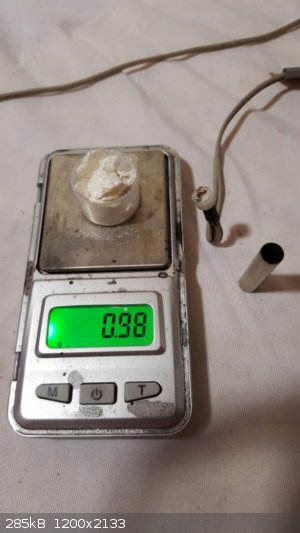 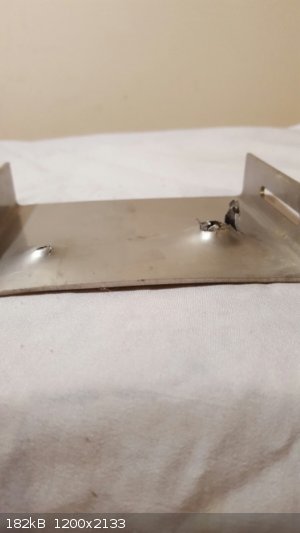 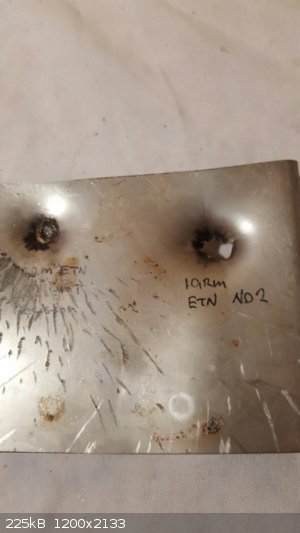 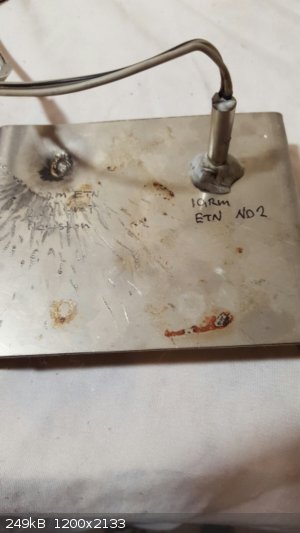
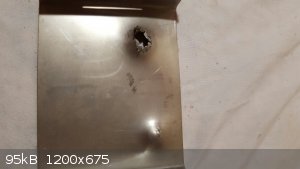
|
|
|
XeonTheMGPony
International Hazard
    
Posts: 1640
Registered: 5-1-2016
Member Is Offline
Mood: No Mood
|
|
trick I used for fusing the wires to the lead wire I used basically a cap driven spot welder. I'd charge the cap to 6v and then hook the leads to the
caps and press onto the bridge wire and it would fuse tot he lead wires, got to play with it to get it perfect, but it worked great with me, used the
same system to spot weld leads on to batteries.
Good results though surprising the carbon is allowing you to get a good pulse into it.
[Edited on 30-4-2016 by XeonTheMGPony]
|
|
|
yobbo II
National Hazard
   
Posts: 762
Registered: 28-3-2016
Member Is Offline
Mood: No Mood
|
|
Home produced very fast discharge capacitors here
http://laserkids.sourceforge.net/eng_capacitor.html#top
|
|
|
nux vomica
Hazard to Others
  
Posts: 267
Registered: 18-7-2013
Member Is Offline
Mood: No Mood
|
|
They would give you satisfaction as there self made but a bit too big, i would still use these as they are the ducks nuts. http://m.ebay.com/itm/291095298708?_mwBanner=1
|
|
|
nux vomica
Hazard to Others
  
Posts: 267
Registered: 18-7-2013
Member Is Offline
Mood: No Mood
|
|
Managed to video the ebw unit chargeing up and fireing a 16 grm shaped charge into a100mm target also had a seperate camera filming the charge going
off about 4 meters away.
Dont know results yet as i will have to cut the target up at work next week.
Attachment: InShot_20160507_182916.mp4 (7MB)
This file has been downloaded 926 times
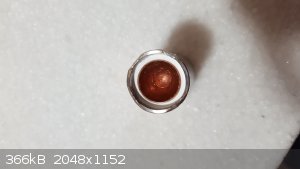 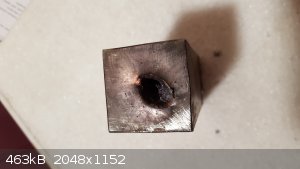
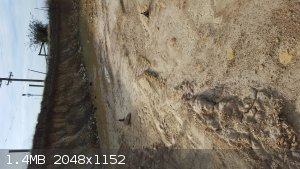
|
|
|
nux vomica
Hazard to Others
  
Posts: 267
Registered: 18-7-2013
Member Is Offline
Mood: No Mood
|
|
Ok the results were not as good as i hoped only 32mm penertration,it looks as i should have used more standoff than 3x as the enterance hole looks
extra large might have to go 5.5 x standoff.
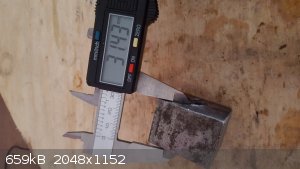 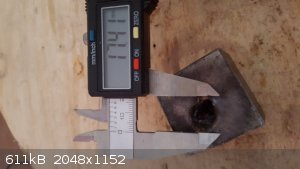 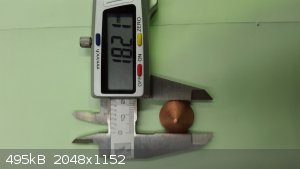 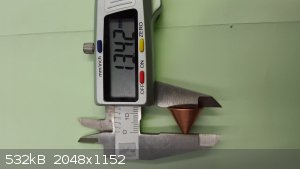 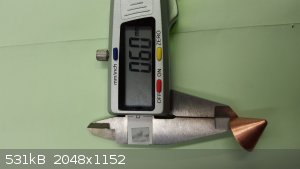
|
|
|
lysander
Hazard to Self
 
Posts: 69
Registered: 12-7-2015
Member Is Offline
Mood: No Mood
|
|
How can we protect the voltage source from the pulse? I finally got to wire this up and the first shot fried most of the diodes on the top cascade.
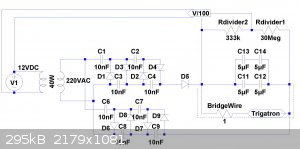
|
|
|
nux vomica
Hazard to Others
  
Posts: 267
Registered: 18-7-2013
Member Is Offline
Mood: No Mood
|
|
Quote: Originally posted by lysander  | How can we protect the voltage source from the pulse? I finally got to wire this up and the first shot fried most of the diodes on the top cascade.
|
Looks like only put a diode one one output of the cascades , you need to put one on both.
Nux
|
|
|
The Plutonium Bunny
Harmless

Posts: 19
Registered: 22-4-2015
Location: On an actinide asteroid
Member Is Offline
Mood: Fissile
|
|
This is my first post, so hello everyone! I will say before I begin that I have no honest-to-goodness high explosives to test my EBW with, so I am
not sure if it will actually detonate high explosives like ETN.
That said, I made some nitrocellulose and have experimented with it and some simple bridgewires I made. My bridgewires are just ~1cm long single
strands of fine copper wire from alligator clip test leads, crimped on each end to thicker wires. These thicker wires go to a normal 120V electrical
extension cord which goes to my capacitor bank/detonator button (the extension cord is so I can be far away from the explosion). My capacitors are
five 330V disposable camera flash capacitors wired in series for more current. I have two bolts held apart by a spring that can be pushed together to
act as a high-current detonator button. I made a YouTube video about my EBW setup, which may be viewed here: https://www.youtube.com/watch?v=KD2RTMVT8qQ
When I charge my cap bank to 300V and press the button, a very loud noise and a bright blue flash ensue. The copper wire is nowhere to be found. I
have achieved what I believe to be a nitrocellulose detonation by initiating pressed nitrocellulose with one of my EBWs inside a crimped-over brass
shell casing. The explosion may be viewed in this YouTube video: https://www.youtube.com/watch?v=OmjHgaalygU
Hopefully this information is helpful. On a side note, do any of the experienced experimenters on this forum have any input as to whether this EBW
setup would actually initiate ETN and other high explosives?
|
|
|
nux vomica
Hazard to Others
  
Posts: 267
Registered: 18-7-2013
Member Is Offline
Mood: No Mood
|
|
Underground wanted a circuit diagram from my ebw setup
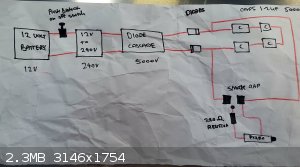
[Edited on 26-4-2018 by nux vomica]
|
|
|
underground
National Hazard
   
Posts: 702
Registered: 10-10-2013
Location: Europe
Member Is Offline
|
|
Ty bro, but still got few questions:
1) How does actually works the spark gap button ?
2) Bank is 1mf ? 1mf is enough for capacity ?
3) I saw on other posts that you use some dividers(resistors) for measuring the current from the bank and for discharging it after the spark, can you
saw me where they were connected please?
Also i am thinking to use a 9v battery to make things a bit smaller and lighter
|
|
|
underground
National Hazard
   
Posts: 702
Registered: 10-10-2013
Location: Europe
Member Is Offline
|
|
After rading the thread, i was thinking to trigger the EBW with a single channel remote control switch. Since high voltage relays are very expensive,
i thought the following swith as you can see the attachment. There would be a spring that will always reset the 2nd electrode to its starting position
and when current pass through the motor, the electrode will pass close to the other electrode triggering the EWB with an arc. What do you think, would
be reliable ?
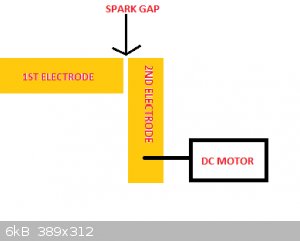
|
|
|
| Pages:
1
..
9
10
11 |